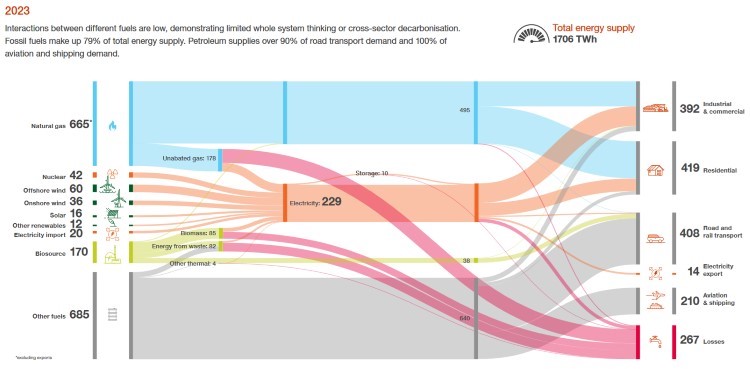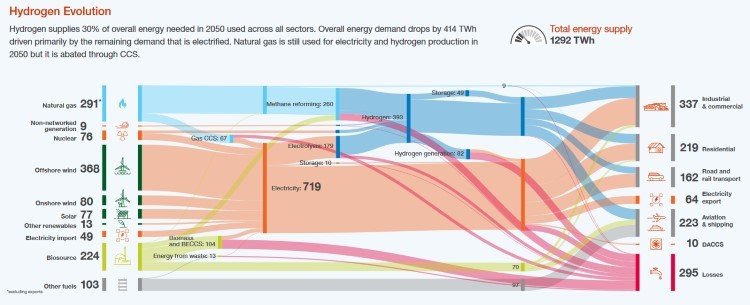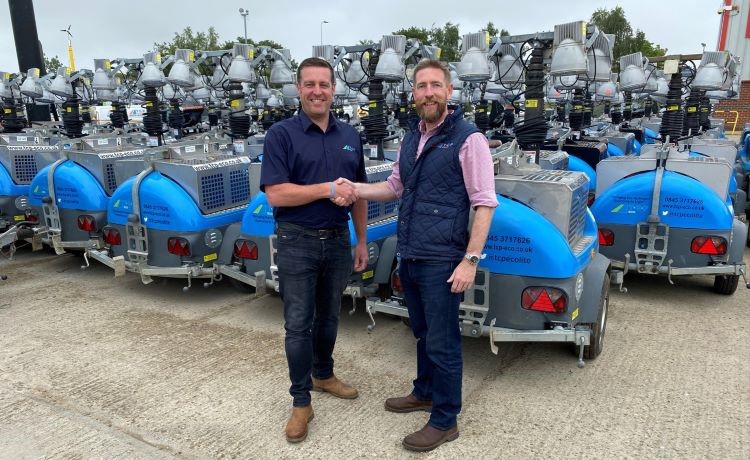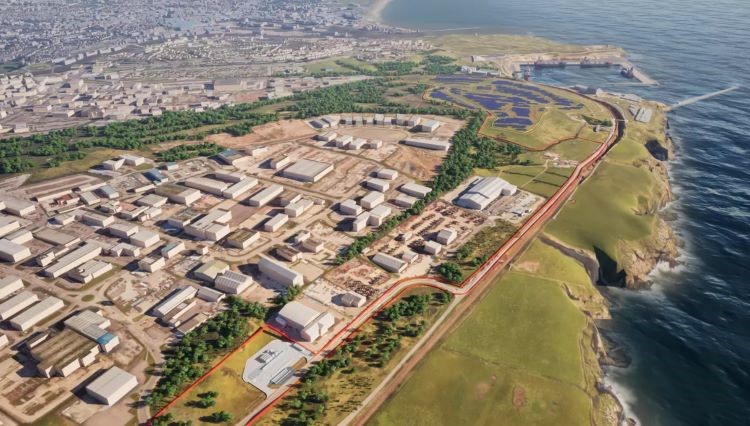The Defence and Security Accelerator (DASA) is pleased to launch a new £2 million Themed Competition called Innovation in Support of Operations. Run on behalf of the Ministry of Defence, this competition seeks fast paced scalable proposals across four key challenge areas:
- Novel and enhanced scale complex manufacture of materiel
- Autonomous system navigation and applique options
- Wide-area sense and detect
- Innovative solutions for minefield breaching
The UK Government is continually assessing lessons from world events. From these lessons, we seek to rapidly adopt solutions that enhance our military and economic advantage. This competition intends to identify nearly ready solutions and techniques that can be accelerated into scalable and deliverable effect faster than our adversaries.
Do you have a suitable innovation? Read the full competition document and submit a proposal.
In short:
- DASA has launched a new Themed Competition: Innovation in Support of Operations
- Funded by the MOD
- Total funding available is £2 million (excluding VAT)
- The competition will be continuously open over three cycles with closing dates of 10 September, 22 October and 3 December
Learn more here and submit a proposal
Hydrogen Scotland member bp Aberdeen Hydrogen Energy Limited – the joint venture between bp and Aberdeen City Council – announced this week that their final investment decision for its Aberdeen Hydrogen Hub project has been agreed. Construction activities are expected to begin before the end of 2024, targeting green hydrogen production from 2026.
The Aberdeen Hydrogen Hub will feature a hydrogen production, storage and distribution facility, located at Hareness Road in Aberdeen, which will be powered by electricity generated at a solar farm to be installed on the former Ness landfill site located nearby.
Once operational the Aberdeen Hydrogen Hub will have the potential to deliver up to around 300 tonnes of green hydrogen a year through the initial phase of the project, enough to fuel 25 buses and a similar number of other fleet vehicles per day. The Aberdeen Hydrogen Hub is a scalable, green hydrogen production, storage and distribution facility in the city powered by renewable energy. The hub plans to be developed in three phases, scaling with growing demands for hydrogen:
- Phase one involves building a hydrogen refueling facility for buses and trucks, powered by a solar farm. It aims to produce over 800 kilograms of green hydrogen per day – enough to fuel 25 buses and a similar number of other fleet vehicles.
- Phase two could see production scaled up to supply over three tonnes per day of green hydrogen for road, rail, freight and marine, by 2030.
- Phase three could scale up further to supply hydrogen for heat in buildings and potentially export. Expansion would be enabled by the expected increased availability of local renewable power sources, including developments that emerge from the ScotWind offshore wind initiative.
The solar farm and hydrogen facility will be on separate sites but linked by an underground solar grid connection. The hydrogen site has a substation grid connection to power it in periods of low solar power production, while excess power can be returned to the grid when high solar power is generated.
The green hydrogen and vehicle refuelling facility are located at Hareness Road. The solar farm would be located at the former Ness Landfill site to the west of the Coast Road. The planning application for the Aberdeen Hydrogen Hub was submitted in March 2023 and planning permission was granted at the end of June 2023.
The Aberdeen Hydrogen Hub will be actively marketing hydrogen for use in road transport fleets (e.g., buses, trucks, vans and cars at 350 and 700 barg) and related applications. Get in touch with the Aberdeen Hydrogen Hub via their contact us page to find out more about use of green hydrogen to decarbonise transport fleets and to discuss offtake from the Aberdeen Hydrogen Hub.
National Grid has released the latest update to their Future Energy Scenarios, FES2024. For an introduction to the FES2024 Pathways there is a series of four FES2024 webinars taking place this week on Wednesday 17th and Thursday 18th July, see below for details.
The ESO Pathways to Net Zero represent different, credible ways to decarbonise the UK energy system by 2050. FES 2024 has adopted a new framework to better present three pathways for net zero by 2050 with the Counterfactual scenario which shows how UK energy might look if decisive actions are not taken within the next two years to deliver the fundamental change required for a net zero UK energy system by 2050.
- Mixed Pathway: explores a route to net zero under a mixed technology development path.
- Electrification Pathway: explores a route to net zero under a highly electrified development path.
- Hydrogen Pathway: explores a route to net zero under a hydrogen development path
- Counterfactual: explores a world where not enough progress is made on decarbonisation and net zero 2050 is missed.
The previous FES framework, used since 2020, presented a wide range of credible outcomes on the route to net zero. This new framework seeks to explore a narrower range by identifying strategic choices that can be made on the route to net zero and forms part of a wider industry overhaul to Great Britain’s energy network planning.
The three new FES2024 pathways – Holistic Transition, Electric Engagement and Hydrogen Evolution – explore strategic routes to net zero based on extensive stakeholder engagement, research and analysis. In comparison, the Counterfactual is used to understand the gap between successful tracking of the pathways versus enabling change too slowly and missing key UK targets for Net Zero by 2050.
- Holistic Transition: 2050 energy demand for net zero is met through a mix of electrification and hydrogen, with hydrogen mainly around industrial clusters. Consumer engagement in the transition is very strong with demand shifting, with smart homes and electric vehicles providing flexibility to the grid.
- Electric Engagement: Net zero in 2050 is met through mainly electrified demand. Consumers are highly engaged in the energy transition through smart technologies that reduce energy demands, utilising technologies such as electric heat pumps and electric vehicles.
- Hydrogen Evolution: Net zero in 2050 met through fast progress for hydrogen in industry and heat. Many consumers will have hydrogen boilers, though energy efficiency will be key to reducing cost. There are low levels of consumer engagement. Hydrogen will be prevalent for heavy goods vehicles but electric car uptake is strong.
- Counterfactual: Net zero UK target for 2050 is missed, though some progress is made for decarbonisation compared to today. While home insulation improves, there is still a heavy reliance on gas across all sectors, particularly power and space heating. Electric vehicle uptake is slower than the net zero pathways, but still displaces petrol and diesel.
In 2023 the total UK energy demand was 1706 TWh with fossil fuels making up 79% of total UK energy supply. Petroleum supplied over 90% of road transport demand and 100% of aviation and shipping demand. Interactions between different fuels are low, demonstrating limited whole system thinking or cross-sector decarbonisation as illustrated below:

UK Energy Supply in 2023
By contrast the Hydrogen Evolution pathway predicts the total UK energy demand will reduce to 1292 TWh in large part due to improved energy efficiency measures. Hydrogen supplies 30% of overall energy needed in 2050 used across all sectors. Overall energy demand drops by 414 TWh, driven primarily by the remaining demand that is electrified. Natural gas is still used for electricity and hydrogen production in 2050 but it is abated through CCS.

UK energy supply and demand in 2050 – the FES2024 Hydrogen Evolution Pathway
The Hydrogen Evolution pathway uses high levels of hydrogen dispatchable power plants to lower needs for renewable and nuclear capacities, and CCS abated natural gas plants have lower utilisation post 2035. Hydrogen storage provides most flexibility in this pathway.
Link to FES2024 Pathways Summary
Link to FES2024 Pathways report

The UK Government has appointed Chris Stark to head the new Mission Control initiative tasked with delivering clean power across the UK by 2030, and this week’s announcement of £7.3bn of additional funding for the new National Wealth Fund will help unlock private investment in new technologies such as hydrogen and green steel.
Chris Stark delivered the inaugural Hydrogen Scotland Burns Week Lecture earlier this year on 22nd January at the University of Strathclyde in Glasgow, using this opportunity to highlight the challenges of energy system decarbonisation and the need to achieve net zero power. Previously chief executive of the Climate Change Committee, and former Director of Energy and Climate Change in the Scottish Government, Chris Stark will bring extensive expertise working with the energy sector to remove barriers and achieve the clean power mission on the country’s path to net zero.
Chris Stark said: ‘Tackling the climate crisis and accelerating the transition to clean power is the country’s biggest challenge, and its greatest opportunity. By taking action now, we can put the UK at the forefront of the global race to net zero – driving down our carbon emissions but also cutting bills for households. It is a privilege to head up this work alongside the country’s top energy experts who will make this mission a reality.’
This new Mission Control initiative will be the first of its kind in the UK government – with a focus on accelerating the transition away from volatile fossil fuel markets toward clean power, improving Britain’s energy security and cutting energy costs – solving the Energy Trilemma.
Mission Control will be a one-stop shop, bringing together a top team of industry experts and officials to troubleshoot, negotiate and clear the way for energy projects. Mission Control will work with key energy companies and organisations including the regulator Ofgem, the National Grid and the Electricity System Operator to remove obstacles and identify and resolve issues as they arise. This will speed up the connection of new power infrastructure to the grid, and cleaner, cheaper power to people’s homes and businesses.
The announcement this week of £7.3bn of additional funding for the new National Wealth Fund will help unlock private investment in new technologies such as hydrogen and green steel. Chancellor Rachel Reeves and the Business Secretary, Jonathan Reynolds have instructed officials to immediately begin work to align the UK Infrastructure Bank and the British Business Bank under a new National Wealth Fund that will invest in the new industries of the future.
Under the Government’s new plans, the National Wealth Fund will bring together key institutions and a compelling proposition for investors. This will mobilise billions more in private investment and generate a return for taxpayers. £7.3bn of additional funding will be allocated through the UK Infrastructure Bank so investments can start being made immediately, focusing on further priority sectors and catalysing private investment at an even greater scale.
This £7.3bn funding is in addition to existing UKIB funding. As part of the National Wealth Fund reforms will be made to the British Business Bank, which is overseen by the Department for Business and Trade, to ensure it can mobilise the UK’s institutional capital and unlock billions of pounds of investment in the UK’s world-leading green and growth industries.
Building on the success of its inaugural year, NATO’s Defence Innovation Accelerator for the North Atlantic (DIANA) has launched five 2024 challenges to continue to attract the best and brightest innovators across the Alliance in support of its mission to build a peaceful and more resilient future.
Innovators selected will receive funding to enable participation in the DIANA accelerator programme, which starts in January 2025, and they will embark upon a six-month intensive programme custom-designed for early-stage dual-use start-ups. They will have access to mentorship and testing facilities, as well as access to trusted investor and end-user networks to help them move from ideation to real-world adoption in defence and civilian markets.
If you are an innovator with cutting-edge ideas on Energy & Power, Data & Information Security, Sensing & Surveillance, Human Health & Performance and Critical infrastructure & Logistics, we encourage you to apply by Friday 09 August.
Apply now
Read the challenge statement here
Energy and Power challenge
Designed to build and expand on the success of the 2023 Energy Resilience challenge. This challenge focuses on enhancing energy and power resilience within—but not limited to–energy storage, smart grid technologies, nuclear micro-reactors, small modular reactors or novel reactors, cyber-physical security, data analytics and AI, vehicle energy infrastructure, energy efficiency, microgrid tech, energy recovery, materials science, systems engineering, or blockchain.
Data and Information Security challenge
DIANA is looking for technology solutions that facilitates data production, utilisation, distribution, and protection in multi-domain environments, be it quantum and post-quantum cryptography, data assurance, edge computing, blockchain technology, biometrics, zero-knowledge proofs, cyber deception technology, deepfake detection technology, and beyond.
Sensing and Surveillance challenge
Building on the success of the Sensing and Surveillance challenge in 2023. DIANA is seeking solutions that enable forecasting, indications and warning, situational awareness, post-action assessment, and understanding of behaviour drivers such as patterns-of-life analysis and sentiment including–but not limited to–advanced sensing technology, quantum materials, novel materials for sensing, drone surveillance, augmented reality, next gen wireless technology, secure sensor data transmission and storage systems, and intelligent resource allocation and planning systems.
Human Health and Performance challenge
This challenge is seeking solutions that improve the understanding and enhancement of human health and wellbeing, both physical and psychological through—but not limited to—next-gen wearable tech, personalised healthcare, bio-inspired tech, advanced exoskeletons and prosthetics, AI and autonomy enabled technologies; chemical, biological, radiological and nuclear (CBRN) detection and defence, materials science, and engineering.
Critical Infrastructure and Logistics challenge
Seeking technology focused on the secure and trustworthy operation of critical national and international infrastructure, and global supply chains across various domains. This includes—but is not limited to: IoT technology, component integration, advanced decentralised data-driven logistics, autonomy, underwater cable protection, climate change monitoring, data analysis and interpretation, material and manufacturing development, in-situ repair tech, alternate power supplies, effective communication, or modelling capabilities.
Cross Cutting themes
DIANA is also asking innovators to consider three cross-cutting themes across the five challenge topics: space, resilience and sustainability.
- Space represents an environment and domain with a vast and largely unexplored frontier with immense potential for scientific discovery and technological innovation.
- Resilience emphasizes the need for solutions and technologies that can withstand and quickly recover from disruptions or threats.
- Sustainability is an important element of responsible innovation, and emphasises the importance of developing and implementing environmentally friendly, disruptive technologies and practices that ensure long-term viability.
Find out more information here
Hydrogen Scotland member TCP Group have reached the milestone of operating a fleet of 500 hydrogen fuel-cell mobile lighting towers available to hire, with the support of a fully managed service. The TCP Ecolite TH-200 hydrogen lighting towers are replacing traditional diesel-powered lighting towers, with remanufacturing hundreds of their diesel-powered lighting towers to use hydrogen fuel-cells and gas cylinders. providing the same lighting performance with the benefits of zero-emissions and much lower noise levels.
Gareth Holden, TCP Scotland Manager, said, “It’s great that our fleet of hydrogen lighting towers is growing at pace now. The towers are becoming increasingly popular for off-grid filming, events and major construction projects in Scotland. The light is natural and they are perfect for filming as they are completely silent.”

Joe Ambor and Jim Irvine with some of TCP’s Ecolite hydrogen fuel cell lighting towers
Jim Irvine, Operations and Development Director at TCP Group, added: “The TCP Ecolite TH200 (hydrogen fuel-cell mobile lighting tower) is an increasingly popular choice where temporary lighting is required and as companies look for clean energy solutions to reduce carbon emissions. We have an ever-growing demand for this particular lighting tower, and we committed to the provision of 500 towers by July 2024. With large infrastructure projects moving forward, such as Sizewell C and the Lower Thames Crossing, this temporary lighting solution is the No.1 choice, as they are silent running, no spill risk and zero emission at point of use.”
Many of TCP’s customers have already benefitted from deploying hydrogen fuel-cell lighting towers. Back in 2015, Costain used them on the Cross Rail project, and they were used for much of the HS2 project. TCP Group works regularly with the Environment Agency, in partnership with Jackson Civil Engineering, to provide clean energy solutions for works such as lock repairs.
Joe Ambor, Sales Director at TCP Group, explained the environmental benefits from remanufacturing TCP’s legacy diesel gen-sets: “We have steadily grown the fleet of hydrogen mobile lighting towers in recent years. As a company faithful to recycling where possible, we have remanufactured hundreds of our diesel-powered lighting towers to use hydrogen fuel-cells and gas cylinders. Our added value is to provide a fully managed gas service. Gas usage is monitored remotely and when a hydrogen gas cylinder needs exchanging, the TCP team make arrangements with the customer to replace the empty cylinder with a full one and then take the empty one away.”.
TCP Group has always had a focus on the effects on health with issues caused by diesel emissions. A partnership was formed with Hydrogen Scotland member BOC in 2010, to replace diesel fuel with hydrogen fuel-cells in lighting towers to transform lighting solutions for site operations. The silent running of the hydrogen fuel cell makes them better neighbours, along with fewer health dangers to site workers whilst helping to drive against climate change.
The hydrogen fuel-cell lighting towers are fitted with Prismalence lenses. These unique lenses create controlled light distribution meaning the uniformity is far superior than other competitors. Artificial lighting can have a negative effect on health and can cause fatigue, headaches and even stress symptoms. The Prismalence lenses have low glare, good visibility, good colour rendering and no flickering. Consequently, the light frequency is a much more comfortable light to work by, increasing employee wellbeing and jobsite safety.
About TCP Group: Founded in 1989 by Andrew Barker (the current Managing Director), TCP Group started out as a plant hire company, but always with a drive to find cleaner fuel solutions. TCP Group has spent the last decade investing in research and development to expand the Eco side of the business. Hydrogen-powered generators, sentry boxes, CCTV and security monitoring systems are some of the applications that TCP Group has developed over recent years and by using hydrogen, it removes at least 80% of emissions, compared to diesel fuel.
TCP Group is headquartered in Maldon, Essex and has depots across the country with the Scottish depot in Falkirk. TCP Group offer initial consultation and expertise to provide guidance to help reduce carbon emissions and offer best options for lighting and power in the most efficient way. TCP Group is also about to launch a range of training courses for customers to understand how hydrogen-based equipment can help with their own sustainability credentials.
Ahead of The King’s Speech on July 17 and to kickstart their engagement with MPs following the General Election, Scottish Renewables has outlined ten priorities for the UK Government’s first 100 days to accelerate economic growth and reduce energy costs. You can watch a summary of these ten priorities on LinkedIn.
Scottish Renewables has also written to the Prime Minister, Chancellor of the Exchequer and Secretary of State for Energy Security and Net-Zero to outline the benefits for the UK’s economy and energy security by uplifting the Allocation Round 6 (AR6) budget as part of a signal of confidence to our supply chain.
The open letter, signed by 67 organisations representing 20,000 jobs, featured in an exclusive by The Herald and has been shared with relevant Ministerial teams across the UK Government. In addition, Scottish Renewables has signed a letter by RenewableUK to the Chancellor of the Exchequer advocating for an uplift to the AR6 budget.
Scottish Renewables has began our programme of engagement with new Ministers, Scotland’s 57 MPs and parliamentary staff to highlight the priorities of the renewable energy industry and supply chain. Key junior Ministerial appointments include:
- Michael Shanks MP (Rutherglen and Hamilton West): Parliamentary Under-Secretary of State in the Department for Energy Security and Net-Zero.
- Sarah Jones MP (Croydon Central): Minister of State in the Department for Energy Security and Net-Zero and the Department for Business and Trade.
- Rt Hon Douglas Alexander MP (Lothian East): Minister of State in the Department for Business and Trade.
- Kirsty McNeill MP (Midlothian): Parliamentary Under-Secretary of State for Scotland.
Scottish Renewables welcomes the establishment of a Mission Control for Clean Power, led by Chris Stark, to support effective cross-governmental action towards 2030 targets. The new Mission Control will work alongside the Clean Energy Mission Board, chaired by the Prime Minister, as well as the development of GB Energy and the National Wealth Fund.
RECRUITMENT AND TAX CONCERNS THREATEN TO UNDERMINE GROWTH IN SCOTTISH ECONOMY
CASHFLOW & PROFITS IMPROVE: Q2 saw significant improvement in terms of cashflow and profits for firms – particularly profits – with growth on balance recorded for both trends.
RECRUITMENT CHALLENGES: Recruitment difficulties increased from 47% to 55% compared to the last quarter, largely driven by challenges across the retail and tourism sectors.
TAXATION INCREASES: Taxation overtook inflation as the leading concern, while fears over competition saw the largest increase (40%) compared to the previous quarter (30%).
LABOUR COSTS: Labour costs are impacting three quarters of firms.
INVESTMENT EASES SLIGHTLY: The report highlighted that although around four in 10 firms are still holding back on investment, that number was slightly down on the previous quarter.
Stephen Leckie, President of the Scottish Chambers of Commerce said:
“Taxation continues to concern firms, to the extent that the issue has overtaken inflation as the leading concern.
“This is having a major impact in attracting and retaining talent in Scotland, contributing to the significant labour challenges many businesses are already experiencing. Divergence on personal taxation has exacerbated the issue.
“Businesses will be looking to both the Scottish and UK government to set out long-term plans to address the current state of taxation which is impacting growth, investment and talent.”
Mr Leckie added:
“Our report shows that over half of Scottish businesses are continuing to experience significant costs and challenges with attracting and retaining the talent they need.
“More restrictive changes to the immigration system made earlier this year, the increase in the national minimum wage, and skills shortages, are all adding pressure on employers.
“The UK Government should address this by introducing a skilled migration strategy which is tailored to the needs of the Scottish economy and restore our reputation as a welcoming and open destination for international students to study, live and work.”
Mr Leckie warned:
“Our latest survey indicates generally improving business conditions across the economy, albeit significant challenges continue to persist which are limiting the ceiling on potential growth and investment.
“The impetus to deliver a credible plan for sustainable growth lies with both the Scottish and UK Government. Now must be the moment to focus on long-term solutions to tackle poor productivity and create an environment for business investment to accelerate.
“The first step is engaging with businesses in Scotland and across the UK, to instil confidence in a new partnership between government and the private sector which is ready to propel our economy to growth and identify how initiatives such as the National Wealth Fund will support Scottish business.”
Mr Leckie commented:
“It’s positive that the survey results are beginning to see a reversal in the consistent trend of frozen investment. Without unlocking investment, firms cannot power the growth the economy needs and which government is relying on to grow the public finances.
“Significant cost pressures, trade barriers and skills shortages, are critical factors to address if we are to see investment across growth sectors such as AI and green technologies.
“To support a just transition, the oil and gas sector urgently needs action and a plan that will give them the confidence to unlock investment worth hundreds of millions which is currently on hold due to uncertainty over the UK Government’s commitment to the sector.”

Environmentally-conscious timber products supplier GMG Energy has joined forces with a respected specialist building company in a strategic partnership which is likely to significantly boost growth in both concerns.
The Highland-based sawmill operator and biomass supplier is teaming up with long-established Lanarkshire construction company Hendry Joinery and Builders to supply and install bespoke garden rooms and home offices across Scotland.
The move is designed to benefit from the continuing strong demand for outdoor space which was sparked by lockdown and is now being sustained by the huge numbers of people – estimated by the ONS at up to 40% – who still work part of the week from home.
The new partnership will be launched at the Caithness Show in Thurso East on the 19th and 20th of July this year. Under the terms of the deal, wood will be supplied from GMG’s eco-friendly plant in the Strath of Halladale in Sutherland, which is powered by a massive solar array on the roof, and Hendry will cut the timber to size to create and install the individually-crafted units.
Malcolm Morrison, Director of GMG Energy, said: “I was inspired to investigate the possibility of a partnership when Kirk Hendry, the owner of Hendry Builders, and his team built a remarkably useful and aesthetically pleasing home office in my own garden.
“The craftsmanship and the quality of work was quite outstanding and the custom-built structure has added value and flexibility to the property, as well as being brought in on time and on budget.
“There is a huge market for this kind of structure, with sector predicting a rise in sales of up to 10% this year. Suppliers are also increasingly focusing on sustainability, using eco-friendly materials and incorporating energy-efficient features, which is a perfect fit with the way we operate.”
Kirk Hendry, who has been in the construction industry for 41 years, said from his base in Strathaven: “We have undertaken a wide variety of work this year, including building two houses, a garden house and a dental surgery, but we see a great scope for growth in the demand for outdoor work and living space.
“The alliance with GMG Energy chimes with customer demand for environmentally-aligned products, since Malcolm has invested heavily in renewables and also specialises in ethically sourced timber from its own sustainable resources.”
GMG Energy, which has a turnover in excess of £2 million, has spent £100,000 on solar power generation as well as £250,000 on equipment. It is a major contributor to the circular economy, using local suppliers and providing products with significantly fewer transport miles to local businesses. It processes 2,000 tons of timber annually.
As a major plank of its business model, the company is committed to replacing every log of timber that it uses, and plants 10,000 new trees a year, which grow to maturity in 35 years. It has far exceeded this target in recent years.


